When You Are New Art and Not Good at Perpective
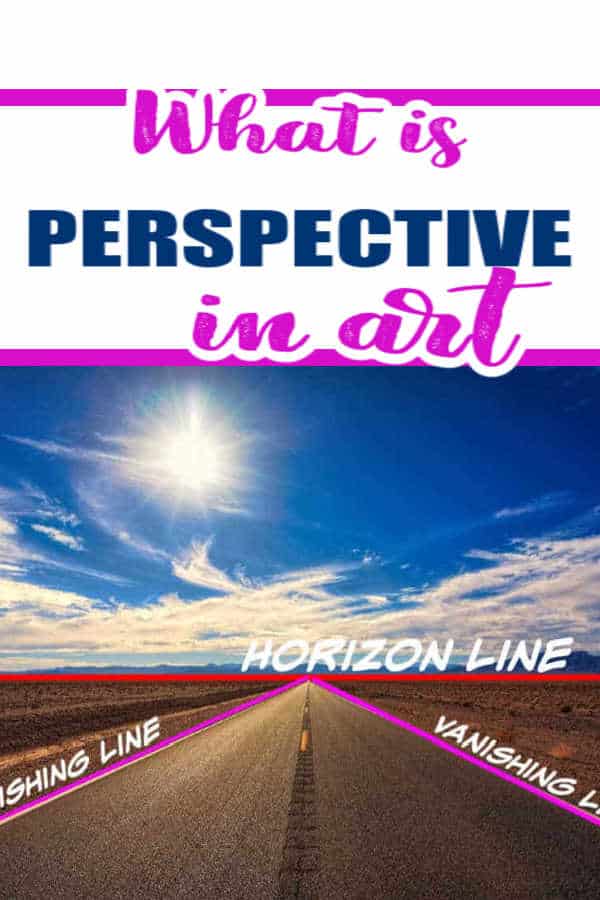
Perspective in art is what gives your work a 3D await rather than a flat painting or drawing. It sounds complicated and boring but it is really quite unproblematic and is probably something y'all already understand but just haven't applied information technology to your work.
Understanding perspective in fine art makes your work look real and in proportion. Learning how to utilise perspective to add distance along with using proper values, will give depth to your painting or cartoon and make it so much more interesting and realistic. To learn more near using value y'all tin read my post on Value in Art.
This postal service may incorporate affiliate links. If you click a link and buy, I may receive a small commission. Please run across my full privacy policy for details.

Defining Perspective in Art
Lets start with a few definitions then I will give a more in-depth caption.
Perspective –a technique that enables artists to add together the illusion of depth to a painting or cartoon. There are several "types" of perspective as explained below.
Viewpoint – the position from where you lot view your scene. And so a normal viewpoint would exist looking at a scene or object at eye level.
You can as well have a low viewpoint where yous are looking at your subject from below, such as looking up to a balcony. High viewpoint would be looking downwardly on a subject, such equally looking down at a beach from a high cliff.
Horizon Line – the imaginary horizontal line in the altitude that is eye level.
Vanishing Lines – lines drawn from the object to a point or points on the horizon. The indicate where these lines meet is chosen the vanishing signal .
I promise these definitions didn't confuse you besides much. It is much easier than it seems and you don't need to call up the name of these terms to make a good slice of art. Yous just have to understand what you are seeing.
So, let'due south meet how to incorporate this information into your artwork.
Finding the Horizon Line
The horizon line is mostly used in mural drawing or painting simply it can likewise be used in indoor scenes and notwithstanding life as well.
Information technology'southward easy to find the horizon line if you are standing on a embankment looking out at the sea. The horizon line is where the sky meets the ocean.
Don't confuse skyline with horizon line. The horizon line in a mountain scene for case, would most probable be at a point lower than where the peaks meet the sky, probably at the base of the mountains or the banks of a lake. Information technology would depend on your perspective or signal of view.

Depict your horizon line parallel to the top and bottom edges of your paper or sheet. Where you place it will determine whether your viewers are looking at the scene from above, below or directly in front end.
The horizon line in your painting or cartoon doesn't have to be in the centre of your newspaper or canvas, and in fact, almost of the time it shouldn't be. You will give your piece more visual involvement if your horizon line is slightly in a higher place or below the centre.
Everything in a higher place the horizon line would slightly slope down towards the line. Everything below the horizon line would slightly gradient up towards the line.
Types of Perspective in Art
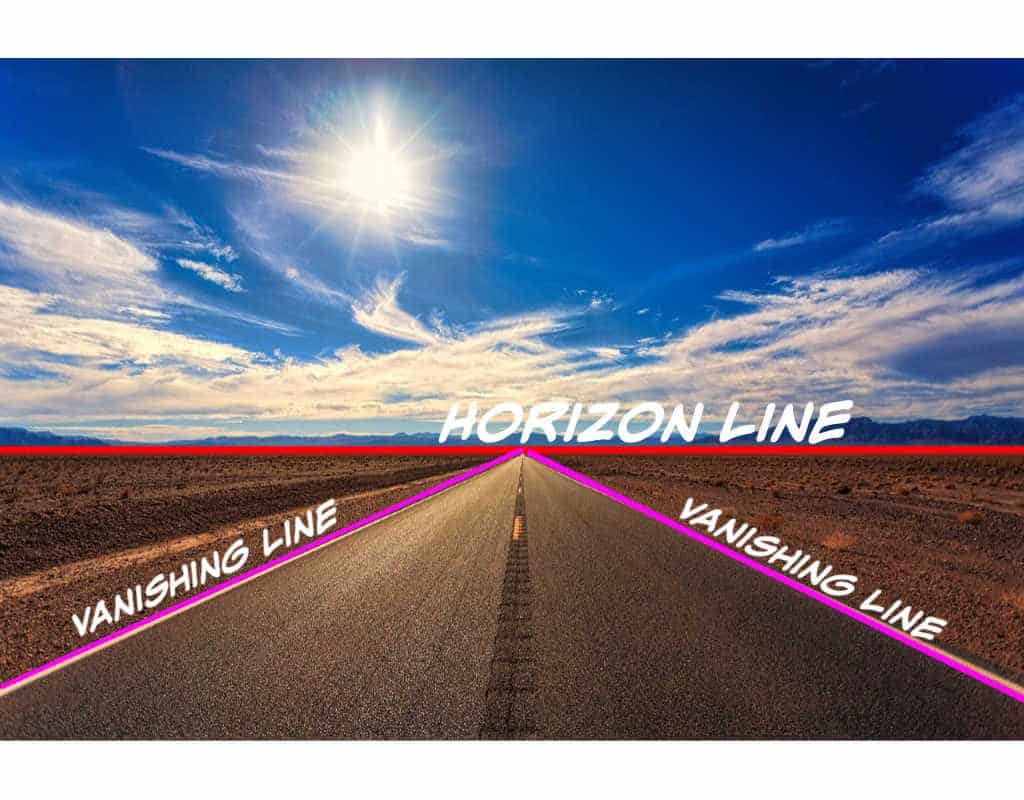
One Bespeak Perspective
– when you look down a long, straight road, the edges of the road give the illusion of meeting at a bespeak on the horizon. This is one indicate perspective because you have one vanishing point.
I signal perspective is used when you are looking straight at an object or scene from the front.
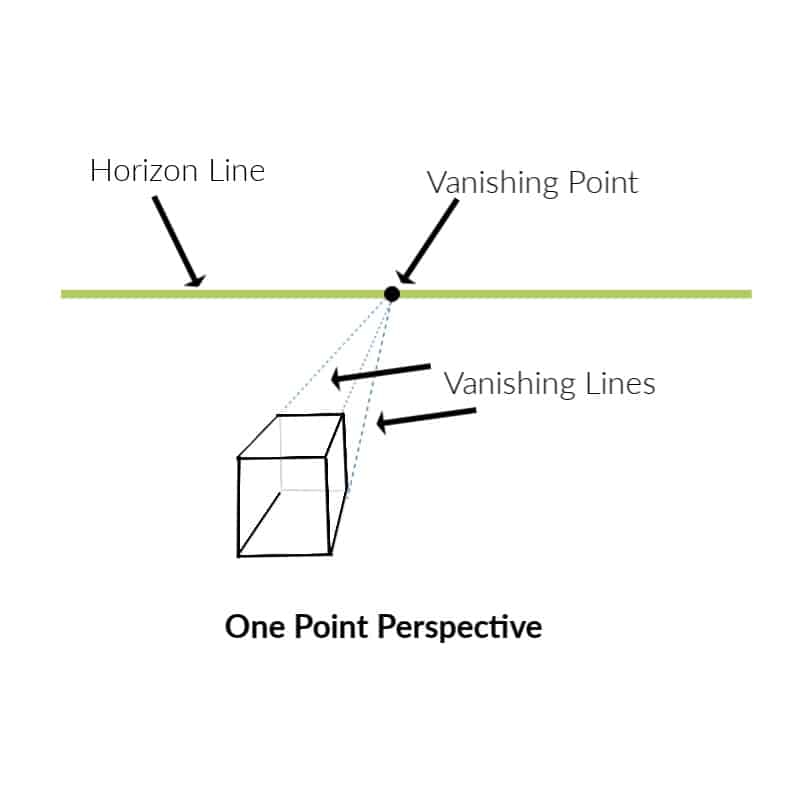
Two Signal Perspective
– when you look at an object from an bending as opposed to directly in front, you will have two vanishing points on the horizon.
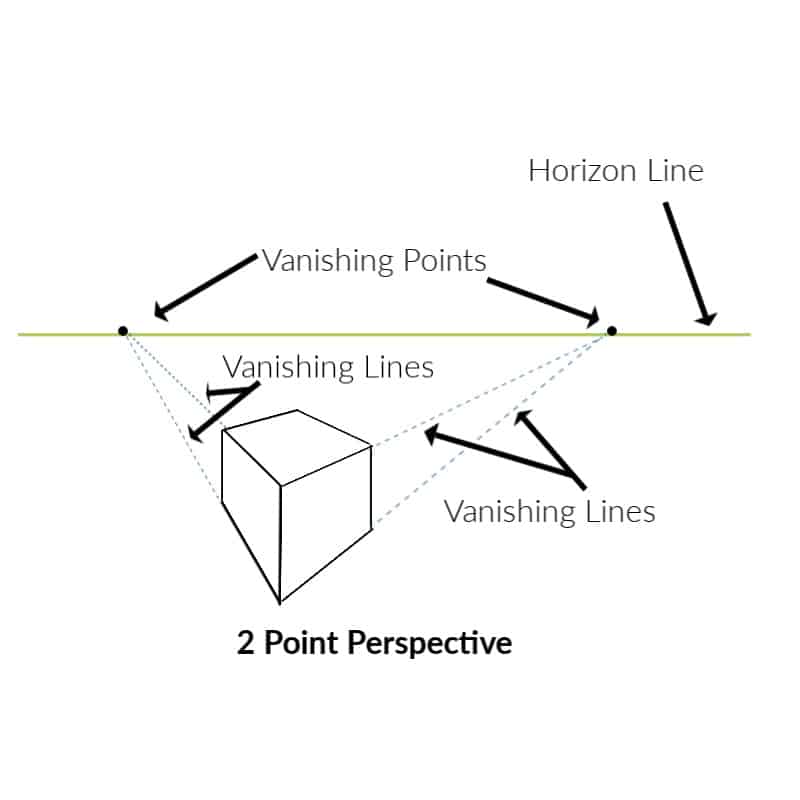
Three Point Perspective
– if you lot are looking at something very tall such as a skyscraper or very alpine tree, you volition have a third vanishing bespeak above the object. You tin also have a third vanishing point if you are looking down into a deep canyon for example.
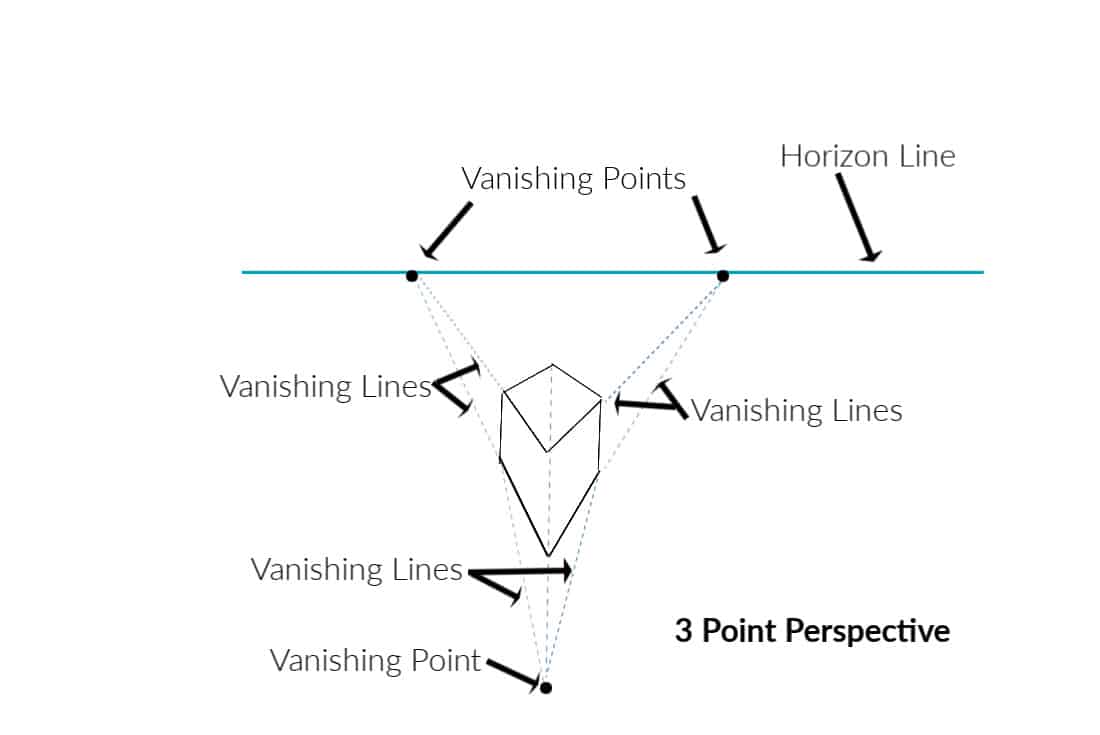
Linear Perspective
– the further abroad an object gets, the smaller it will appear. So if you lot are cartoon or painting a house with a large tree in the altitude, the tree would exist painted or drawn much smaller than the business firm.
Linear perspective will requite you lot the illusion of distance.
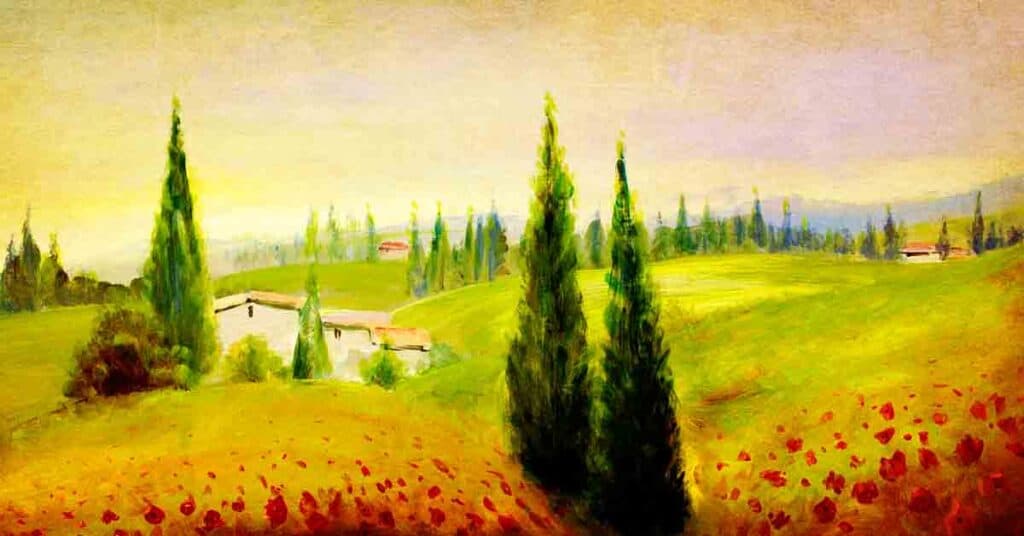
Aerial or Atmospheric Perspective
– objects in the altitude appear less detailed and lighter. They often accept a cool bluish tone. If you lot have e'er looked at mountains in the distance they appear to be a soft, fuzzy blue tone with no definition of the foliage growing on them.
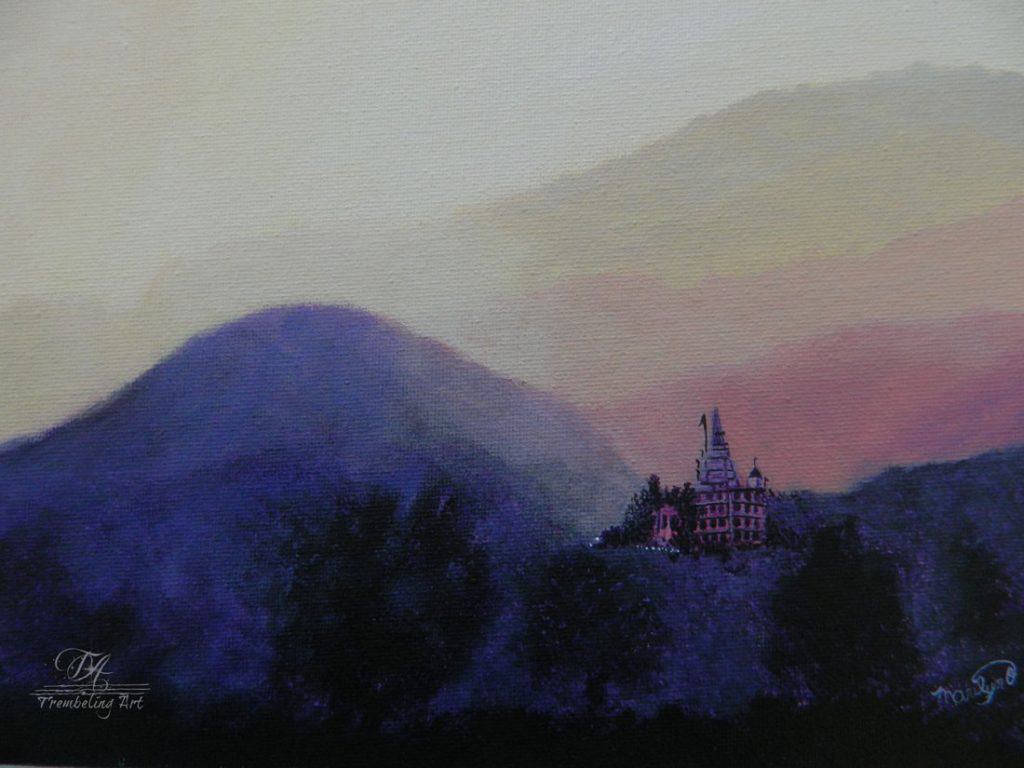
Draw or Paint What Yous See
E'er depict what you lot encounter, non what you lot know. If you expect at a line of street lights on a direct road, you know that they are all the same height and approximate distance apart.
If you describe them like that, you will accept no depth or distance, the drawing will be apartment. You need to draw the light poles progressively smaller and closer together in order to give the illusion of altitude.

Exercise drawing perspective in your sketchbook or on paper every day. Hold your thumb or a pencil or other straight object straight out in front of you and compare it to objects closer together and further away.
Look at a house close to you and a tree further abroad. See how the measurements compare. Draw what you see.
Don't be frustrated when you don't go it correct. That's how we learn.
Analyze your drawing to meet where yous might accept gone wrong. Make notes in your sketchbook about what you think needs improving or what you lot are struggling with.
Tracing to See Perspective
A lot of artists frown on tracing your subject area using tracing paper. They come across it as "cheating".
I think tracing is a fantastic tool for new artists. It not but enables you to get an authentic drawing chop-chop but it also teaches you how to draw what you meet.
When I first began to draw I bought several pads of tracing paper. I traced every picture I could detect and compared the tracing to the original photo.
This gave me a much clearer idea of proportions and how things got smaller equally they recede back into the distance.
When you can view a scene without all the color and shading you lot realize that everything just comes downwards to basic shapes and lines drawn in proportion.
Attempt it out and see if information technology is a technique that helps you. If yous need more data on how to employ tracing newspaper, read my postal service on How to Transfer a Reference Photo.
Over time you will non need the tracing paper and will be able to describe near scenes free hand. I still occasionally using tracing paper when I am drawing or painting a portrait to insure accuracy, since even a tiny discrepancy can change the whole expect of a confront.
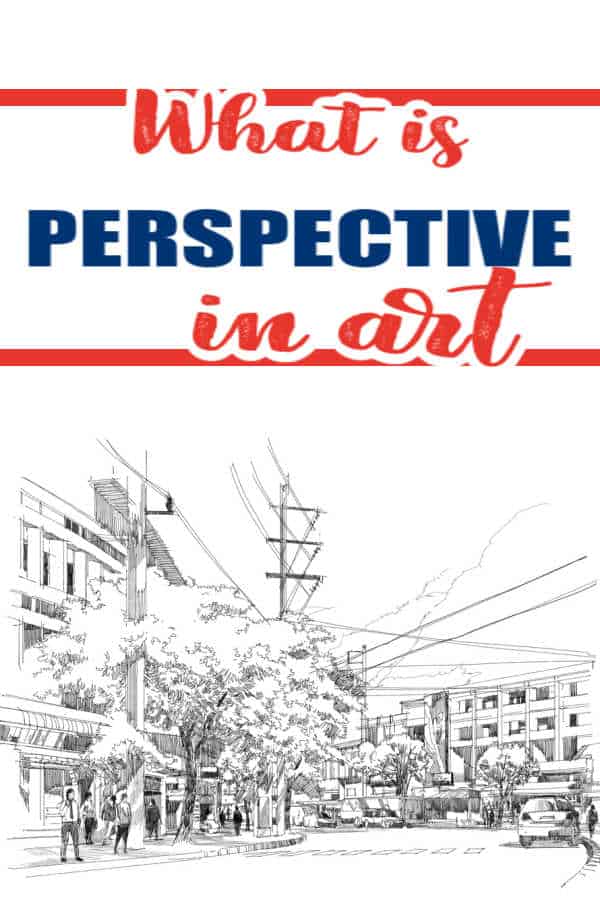
When Non To Use Perspective In Art
I always say there are no difficult and fast rules in fine art and that is also truthful with perspective. If you are going for a realistic cartoon or painting it is best to follow these guidelines, but if you want to practise a more abstract piece you can ignore them and do your own matter.
Peradventure you want to have your central effigy or object stand out and draw or paint information technology out of proportion to the rest of your piece. You lot could do a whimsical painting total of misshapen, out of proportion buildings or trees.
Annihilation is possible, you are the creator so employ your imagination and have fun.
Thank you for reading.
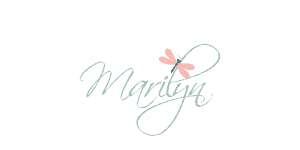
Source: https://trembelingart.com/what-perspective-art-beginners/
0 Response to "When You Are New Art and Not Good at Perpective"
Post a Comment